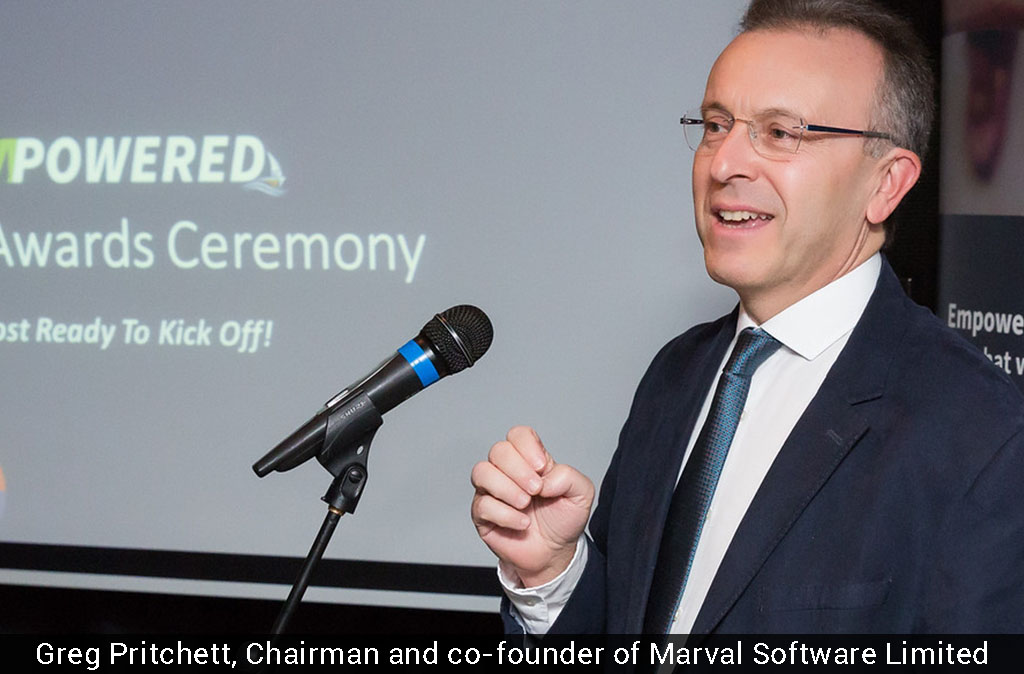Marval are a British technology company established in 1989. We were a company born out of need rather speculative opportunity. As service management practitioners, we looked hard but could not find any off the shelf process/workflow management tools available to help us do our jobs more efficiently and consistently.
In the mid to late 80’s helpdesks (as opposed to service desks) were becoming pretty common, largely being run on paper based ticketing systems with interactions coming via phone, (email was in its infancy) and of course the favoured “drop in” with a coffee in hand. Whilst functional, this lacked key, powerful capabilities, that of real time reporting and searching. Through historical analysis of customers’ issues, we can identify trends in hardware, software or even user issues. And so Marval was born.
Whilst our initial program was effective, there was something lacking – a guiding framework to manage processes and the wider IT framework. With the introduction of ITIL best practice, this discrepancy was filled. This was really the birth of IT Service Management (ITSM)
We embraced ITIL for a number of reasons.
- It described how any IT support organisation should go about their business.
- It defined a common language for service delivery, which meant clearer communication.
- Company adoption of ITIL ensured new staff with these qualifications could become productive more quickly.
- Quality is inherently built inITIL became the underpinning framework for the international standard for ITSM ISO/IEC20000 in 2005 of which Marval were co-authors.
Best Practice vs Standard, what’s the difference?
Best practices are recommendations of how you should execute a process, but standards are prescriptive and so “should becomes shall”, thereby making a process unambiguous and auditable.
So why do we still have so many problems in delivering great service and demonstrating value?
For me there are 2 main reasons:
- The last 30 years have seen unprecedented levels of complexity introduced into the workplace. Initially computing was done on big centralised servers accessed through terminals, then we went to decentralised computing with the proliferation of desktop PCs. Now we have distributed computer environments so when something goes wrong you have to be pretty smart to know where the issue could be.
- Great service is delivered by great people, following great process, using great technology. Unfortunately, too many people still think that technology will fix all of our problems! The fact is that you can have the best tool in the world, the best processes but without the hearts and minds of the individuals interacting with these systems you are doomed to failure. I have seen some service desks, with the best customer satisfaction ratings, the biggest budgets to invest in their IT infrastructures and no expense spared access to some of the best ITSM consultants fail. Why? because the people and business requirement changed, but nobody took the time to make sure processes were tweaked and staff had their skills kept up to date.
Has the advance of technology lived up to its promise and expectations?
We have seen a plethora of software tools promising the earth with a quick ROI. These often end up costing much more than budgeted, but by the time we realise this we are in too deep to back out without losing face, business confidence and money.
We have seen many technologies fail to deliver outcomes and value expected. Technologies such as “self-healing”, “knowledge packs” which are fundamentally great technologies but depend on that key ingredient “people” to work, maintain and keep up to date.
More recently “social collaboration”, which is great for some sectors, but I do not see a senior finance manager, or CIO jumping on to social collaboration software to solve a business or IT problem.
Future Trends
Ai Artificial Intelligence
The current most obvious hype in the industry is “Artificial intelligence”, but to be successful again it will depend on YOUR people and probably your pocket, as many of us will not have the funds available. The large organisations such as Google etc, will be able to reap the rewards, but its sectors such as Healthcare who will really need to benefit the most from it.
So, if you’re going to go for an AI solution check:
- Can I afford it, how much am I prepared to spend?
- What outcomes and value you want it to deliver?
- Can I measure the Return on Investment?
Unless you want to fail
There exist widely held fears that AI will reduce our staff headcounts, but it won’t. AI will simply change the nature of the work they perform. While ITSM practitioners of the future will spend less time engaging in routine tasks, they will spend more time training AI-driven technology to be “smarter,” perform a wider variety of tasks, and, ultimately, behave more like humans.
AI is definitely the future but not for many years!
What are the key challenges faced by organisation?
Managing the IT and service infrastructure continues to be more complex and there is a constant pressure to add value, reduce costs, improve quality and do more with the “same or less”.
Organisations, stakeholders and customers require confidence that their investment in IT and its service provider is being leveraged to the full.
When buying ITSM technology, regardless of any tool selection, effective ITSM requires the right attitude, behaviour and culture embedded in your teams. It is these combined elements which will determine the success or failure of any ITSM initiatives. And yes, it’s all delivered by your most expensive asset; your PEOPLE.










